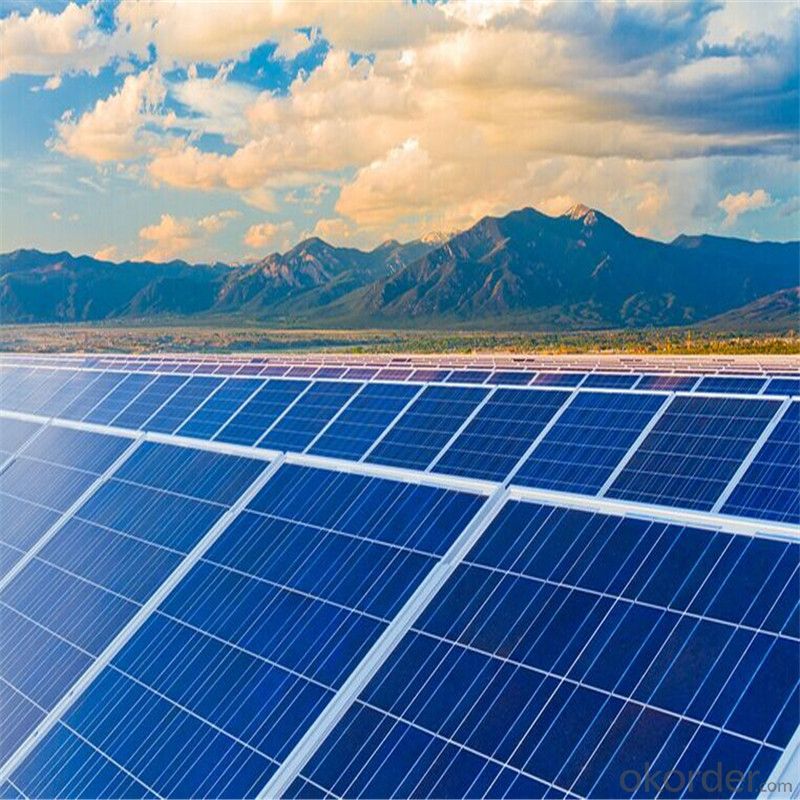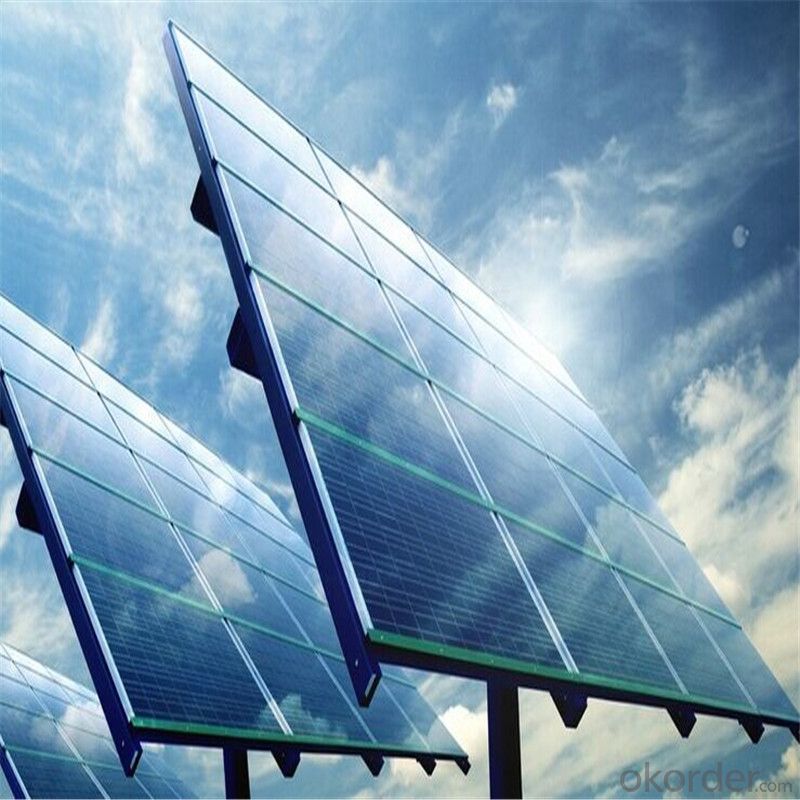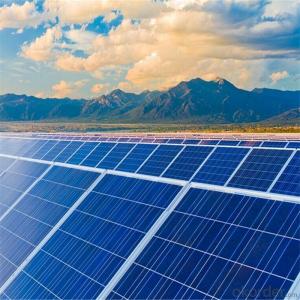245 Watt Photovoltaic Poly Solar Panels
- Loading Port:
- China main port
- Payment Terms:
- TT OR LC
- Min Order Qty:
- 1000 watt
- Supply Capability:
- 500000 watt/month
OKorder Service Pledge
OKorder Financial Service
You Might Also Like
Item specifice
Instruction
Quality and Safety
1. Rigorous quality control meets the highest international standards.
2. High-transmissivity low-iron tempered glass, strong aluminium frame.
3. Using UV-resistant silicon.
4. IS09001/14001/CE/TUV/UL
5.3w-300w mono & poly solar panel supply
Warranties
1. 10 years limited product warranty
2. 15 years at 90% of the minimal rated power output
3. 25 years at 80% of the minimal rated power output
Feature
1. High efficiency and High power.
2. Long-term electrical stability.
3. Lowest price and Fastest delivery.
4. Good quality and good service.
5.Bulk supply
6. Good Warranty
7.Big Sale
8.High quality
9.More than 35 years on the lifetime.
10 DHL/Fedex/UPS/TNT/EMS etc
Images


Specification
Model | SIM-100 |
Maximum Power at ST(Pmax)W | 100Wp |
Maximum Power Voltage(Vmp)V | 18.0V |
Maximum Power Current(Imp)A | 5.56A |
Open Circuit Voltage(Voc)V | 22.0V |
Short Circuit Current(Isc)A | 5.9A |
Cell Efficiency(%) | 17.0% |
Module Efficiency(%) | 15.37% |
Operating Temperature°C | -40°C to 85°C |
Maximum system voltage | 1000V(IEC)DC |
Power tolerance | -0.03 |
Temperature coefficients of Pmax | -0.45%/°C |
Temperature coefficients of Voc | -0.27%/°C |
Temperature coefficients of Isc | 0.05%/°C |
Weight(kg) | 7.4 |
Number of cell(pcs) | 4*9 |
FAQ
We have organized several common questions for our clients,may help you sincerely:
1). What’s price per watt?
A: It’s depends on the quantity, delivery date and payment terms of the order. We can talk further about the detail price issue. Our products is high quality with lower price level.
2). Can you tell me the parameter of your solar panels?
We have different series of cells with different power output, both from c-si to a-si. Please take our specification sheet for your reference.
3). How do you pack your products?
We have rich experience on how to pack the panels to make sure the safety on shipment when it arrives at the destination.
4). How long can we receive the product after purchase?
In the purchase of product within three working days, We will arrange the factory delivery as soon as possible. The perfect time of receiving is related to the state and position of customers. Commonly 7 to 10 working days can be served.
- Q:What is the typical size and weight of a solar cell?
- The typical size of a solar cell can vary depending on its application, but a standard residential solar panel is usually around 65 inches by 39 inches, with a thickness of about 1.5 inches. In terms of weight, a typical solar cell can weigh anywhere from 40 to 50 pounds.
- Q:What is the maximum efficiency of a solar cell?
- The maximum efficiency of a solar cell is determined by the Shockley-Queisser limit, which states that the theoretical maximum efficiency is around 33.7%. However, in practical applications, the highest efficiency achieved by commercially available solar cells is currently around 26-27%.
- Q:Are there any subsidies or incentives for installing solar cells?
- Yes, there are subsidies and incentives available for installing solar cells. Many governments and local authorities offer financial incentives such as tax credits, grants, and rebates to encourage the adoption of solar energy. Additionally, some utility companies provide incentives or feed-in tariffs that allow solar system owners to sell excess electricity back to the grid. These subsidies and incentives help make solar installation more affordable and attractive for individuals and businesses.
- Q:Anybody ever heard of thin film solar cell? What it that?
- It is a kind solar cell made from thin film.
- Q:What is the solar cell production process
- There are a dozen types of semiconductor materials for solar cells, so there are many types of solar cells. At present, the most mature technology, and has commercial value, the market's most widely used solar cells are silicon solar cells
- Q:How much electricity can a solar cell generate?
- The amount of electricity that a solar cell can generate depends on various factors such as the size of the cell, the efficiency of the cell, the intensity of sunlight, and the duration of exposure. Generally, a solar cell can produce anywhere from a few watts to several hundred watts of electricity.
- Q:How do solar cells handle voltage fluctuations in the grid?
- Solar cells do not directly handle voltage fluctuations in the grid. Instead, the grid itself, through the use of inverters and other control devices, manages and stabilizes the voltage fluctuations to ensure compatibility with solar cells and other energy sources connected to the grid.
- Q:Do solar cells work at night or in low light conditions?
- Solar cells do not work at night as they require sunlight to generate electricity. In low light conditions, their efficiency decreases significantly, but they can still produce some electricity, although at a much lower rate.
- Q:What is the impact of solar cells on reducing dependence on foreign energy sources?
- Solar cells have a significant impact on reducing dependence on foreign energy sources by providing a renewable and locally available source of electricity. By harnessing the power of the sun, solar cells offer a clean and sustainable alternative to fossil fuels, which often need to be imported from other countries. This shift towards solar energy not only enhances energy security but also reduces reliance on foreign nations for energy supply, thus promoting self-sufficiency and reducing geopolitical risks associated with energy imports.
- Q:How do solar cells perform in areas with high levels of insect activity?
- Solar cells can be affected by insects in areas with high levels of insect activity. Insects can cause shading on the surface of solar panels, reducing their efficiency. Additionally, insect debris and waste can accumulate on the panels, further decreasing their performance. Regular cleaning and maintenance can help mitigate these issues and ensure optimal performance of solar cells in such areas.
1. Manufacturer Overview |
|
|---|---|
| Location | |
| Year Established | |
| Annual Output Value | |
| Main Markets | |
| Company Certifications | |
2. Manufacturer Certificates |
|
|---|---|
| a) Certification Name | |
| Range | |
| Reference | |
| Validity Period | |
3. Manufacturer Capability |
|
|---|---|
| a)Trade Capacity | |
| Nearest Port | |
| Export Percentage | |
| No.of Employees in Trade Department | |
| Language Spoken: | |
| b)Factory Information | |
| Factory Size: | |
| No. of Production Lines | |
| Contract Manufacturing | |
| Product Price Range | |
Send your message to us
245 Watt Photovoltaic Poly Solar Panels
- Loading Port:
- China main port
- Payment Terms:
- TT OR LC
- Min Order Qty:
- 1000 watt
- Supply Capability:
- 500000 watt/month
OKorder Service Pledge
OKorder Financial Service
Similar products
New products
Hot products
Related keywords



























